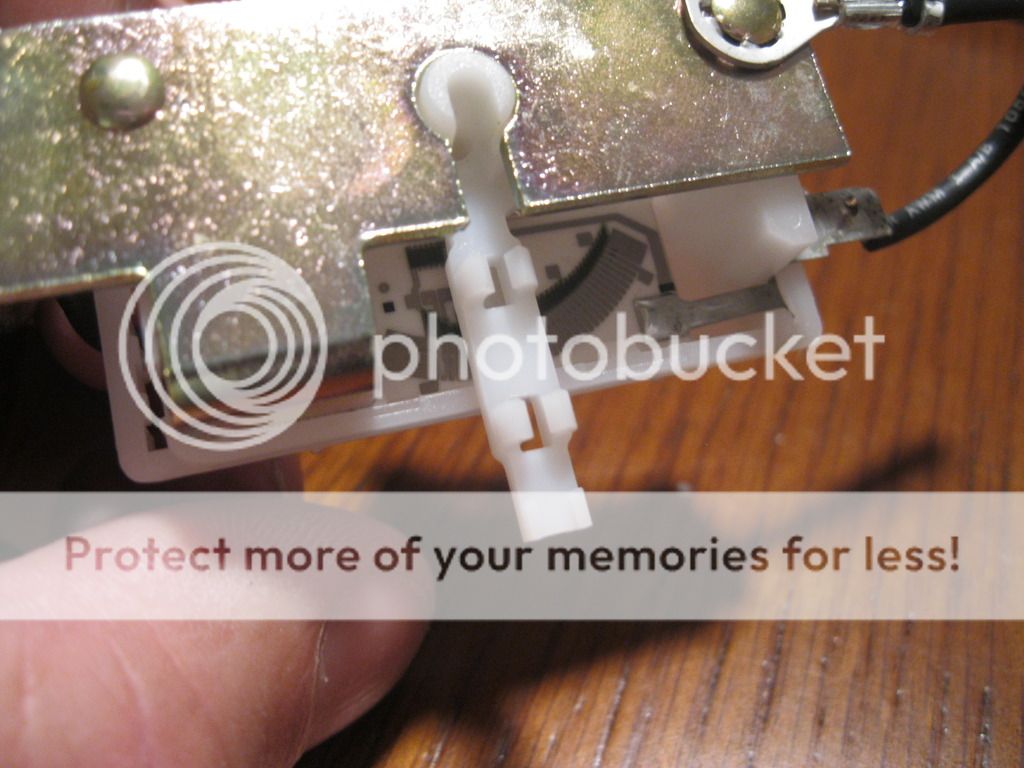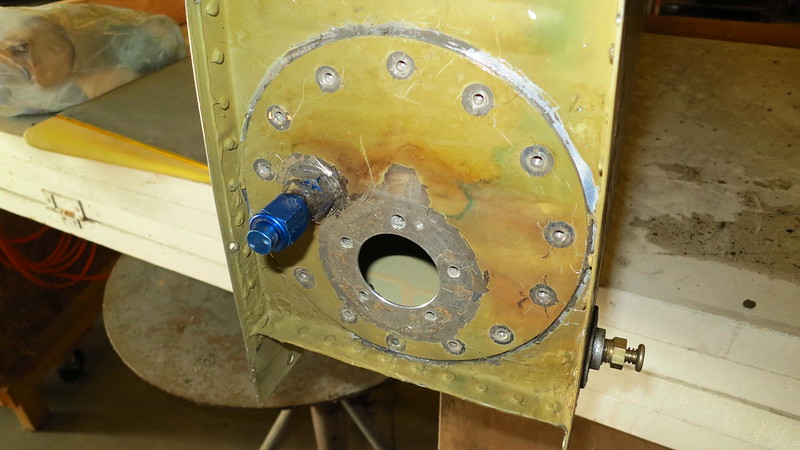Ok, I spent quite a bit of time searching and have looked at all of the previous threads but I wanted to see what the current consensus is. Back in January I noticed the tell tale signs of a fuel leak on my right tank. I pulled off the wing root fairing and noticed that the leak seemed to be coming from the Fuel Sender mount and the fuel Sending unit mount on the wing root. Here is what it looked like:

I took a right angle screwdriver and checked each of the screws and they didn't seem overly tight, so I gave them each 1/4" turn and cleaned it all up and seemed to solve the problem. Seems the leak was coming from just those two places and you could see that the majority of the leak was actually coming from the access panel screw at the FIVE O'CLOCK position as it was wet and seeping.
Well, last week, I noticed that the fuel leak is back. Full disclosure, I have not pulled the WING ROOT fairing again, yet.
It appears that when it was assembled that the cork gasket was used on the access panel and the rubber gasket was used on the sending unit. Looks like there was a thin layer of PRO SEAL put on the gasket before being installed and then also a blob was put on each screw hole before the screws were installed. I'm not sure any were put on the threads or not.
So, what to do...... Well the first thing I'm going to do is give the screws a little more of turn, being careful not to overdo it and risk striping the threads of the nutplates.
In the event that doesn't take care of it then I'll need to do a more in depth repair.
1. Can this be done on the plane without removing the tank? If on the plane on a scale of 1-10 (10 being extremely difficult)? On a scale of 1-10 how difficult to removing the tank(my screws have NOT been painted over, can't vouch if the tanks were removed or if the line/gaps have been painted over and would require they be scored with a knife so it won't peel the paint. On a scale of 1-10 on doing the repair with the wing off?(I would assume this is a 2-3)
1a. If I remove the tank where can I find out the necessary steps to take to remove the tank. (I can understand the remove the mounting screws, the wing root fairing, the fuel supply line, the fuel vent line, and the sending unit wire. What about aileron pushrod and the "Z" brackets on the back side of the tank?)
2. What is the current best practice for sealing these two places?
I realize that this has all been covered before but it has been a few years back and I was wondering if there are any new opinions? Then based on those answers I may have more questions such as more detail on how to accomplish.
3. Where should a get the required parts? VANS? Spruce?
My searching has revealed, gaskets, no gaskets, gaskets with PERMATEX, PROSEAL only, PROSEAL with gaskets, Put on PROSEAL and then let is set up and then tighten further, etc, etc.
Thanks in advance folks!
Mark

I took a right angle screwdriver and checked each of the screws and they didn't seem overly tight, so I gave them each 1/4" turn and cleaned it all up and seemed to solve the problem. Seems the leak was coming from just those two places and you could see that the majority of the leak was actually coming from the access panel screw at the FIVE O'CLOCK position as it was wet and seeping.
Well, last week, I noticed that the fuel leak is back. Full disclosure, I have not pulled the WING ROOT fairing again, yet.
It appears that when it was assembled that the cork gasket was used on the access panel and the rubber gasket was used on the sending unit. Looks like there was a thin layer of PRO SEAL put on the gasket before being installed and then also a blob was put on each screw hole before the screws were installed. I'm not sure any were put on the threads or not.
So, what to do...... Well the first thing I'm going to do is give the screws a little more of turn, being careful not to overdo it and risk striping the threads of the nutplates.
In the event that doesn't take care of it then I'll need to do a more in depth repair.
1. Can this be done on the plane without removing the tank? If on the plane on a scale of 1-10 (10 being extremely difficult)? On a scale of 1-10 how difficult to removing the tank(my screws have NOT been painted over, can't vouch if the tanks were removed or if the line/gaps have been painted over and would require they be scored with a knife so it won't peel the paint. On a scale of 1-10 on doing the repair with the wing off?(I would assume this is a 2-3)
1a. If I remove the tank where can I find out the necessary steps to take to remove the tank. (I can understand the remove the mounting screws, the wing root fairing, the fuel supply line, the fuel vent line, and the sending unit wire. What about aileron pushrod and the "Z" brackets on the back side of the tank?)
2. What is the current best practice for sealing these two places?
I realize that this has all been covered before but it has been a few years back and I was wondering if there are any new opinions? Then based on those answers I may have more questions such as more detail on how to accomplish.
3. Where should a get the required parts? VANS? Spruce?
My searching has revealed, gaskets, no gaskets, gaskets with PERMATEX, PROSEAL only, PROSEAL with gaskets, Put on PROSEAL and then let is set up and then tighten further, etc, etc.
Thanks in advance folks!
Mark




























